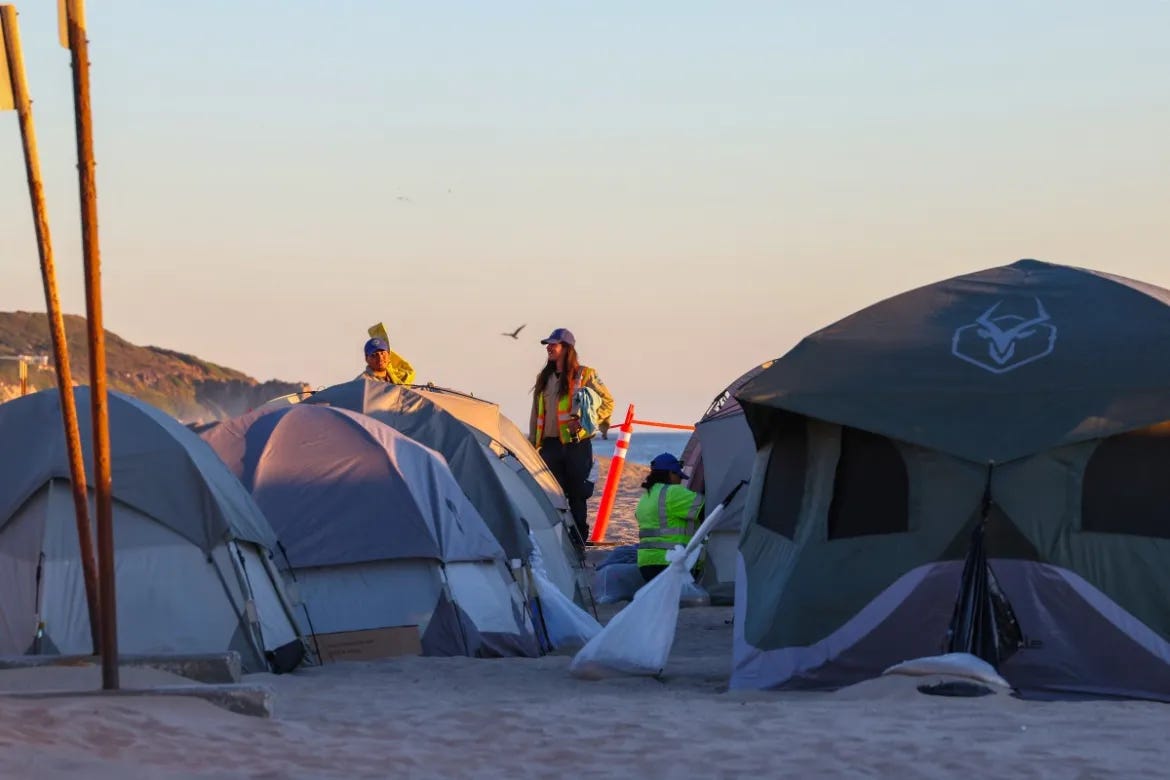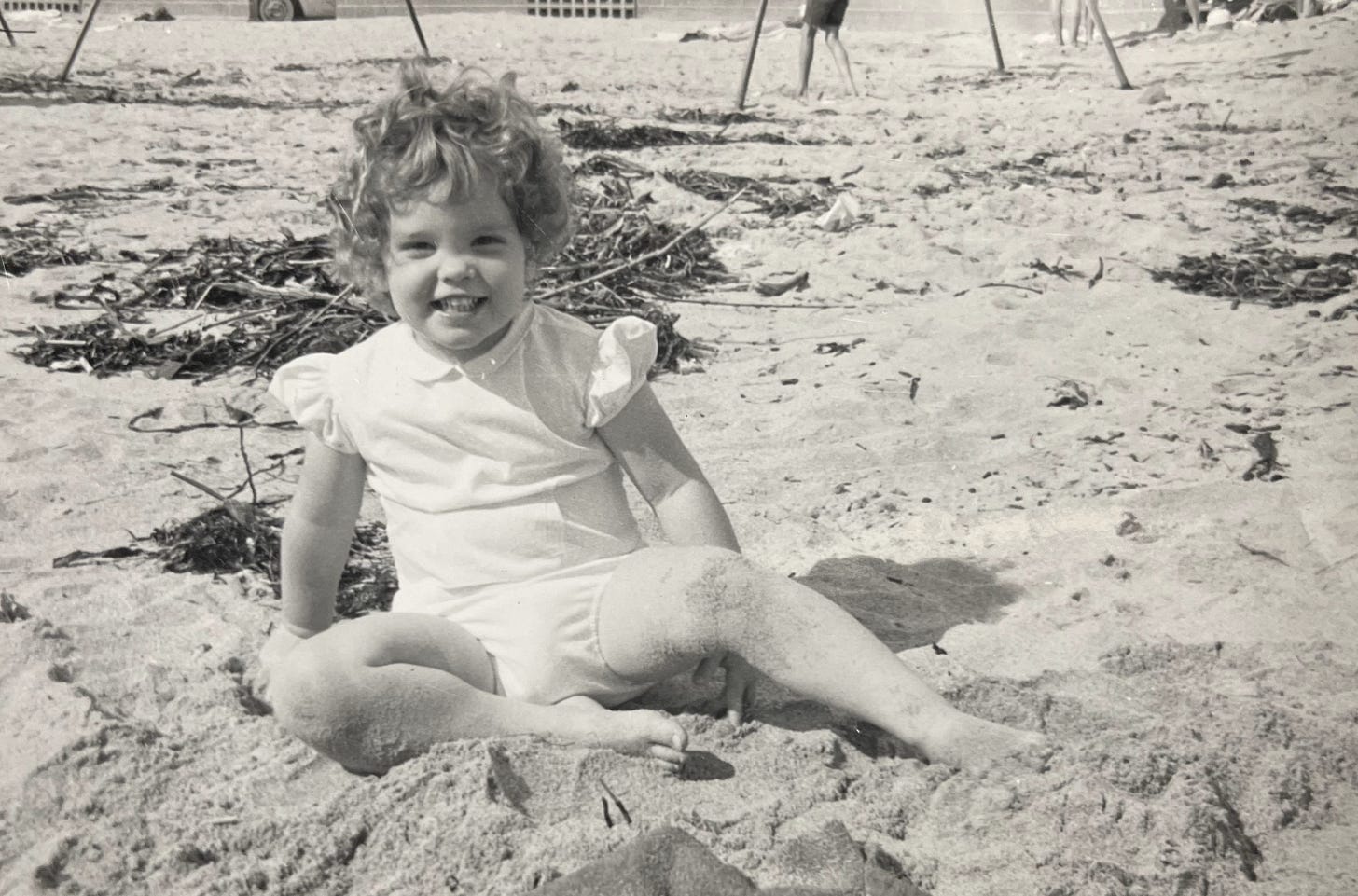When I was a child, “California,” and, specifically, “LA,” were magical words to me.
My parents moved there in the 1950s when they were first married, following so many Midwesterners before them to the land of new beginnings. He was an advertising copywriter for the legendary David Ogilvy; she worked at an employment agency. They lived in an apartment complex with a swimming pool, drove a pink-and-gray Chevrolet and dreamed big dreams.
All her life, my mom talked about the marvels of living in Los Angeles, including never-ending sunshine and being able to harvest lemons and avocadoes from backyard trees. My parents made regular trips to the beach and thought everything about the place was beautiful.
Both my sister and I were born in LA. Actually, I was born at the Hollywood Presbyterian Hospital; I always loved how glamorous that sounded. Eventually, we moved into a brand-new house in the Valley — 22301 Marlin Place, in Canoga Park; I’ll never forget the address — where we were going to live happily ever after.
It didn’t turn out that way.
Sometime in the early 1960s, my dad had what was then called a nervous breakdown and was hospitalized. My mother quickly packed what she could, sold their dream home and drove two little girls in a VW van back to Ohio to be closer to family while he recovered, which took many months. I think I was four.
But LA always remained in my subconscious as a place that wasn’t like any other place, where magical things might happen. Or disaster might strike.
Decades later, when I was a magazine editor in New York, I often flew to LA to supervise photo shoots and interview various celebrities for the cover of Health magazine, where I worked at the time. We photographed stars — including Diane Keaton, Chris Evert and Jacqueline Bissett — in a photographer’s studio or on location, though my pal the art director and I also loved finding the latest cool places. Eating at Spago and shopping on Melrose loom large in my memory (hey, it was the 80s).
I also remember thinking how strange it was to find palm trees, jacaranda and manicured lawns in what was, essentially, a desert. The chaparral on the hillsides above Santa Monica and Malibu seemed more real, somehow, though the twisty roads that wound through the canyons made me uneasy. Forget about traffic and housing prices. How would the people in these spectacular homes — or even just regular folks, living close to the beautiful forests — get to safety if something happened?
As we all know now, the answer is that they might not. The horrific wildfires of the last weeks, fueled by tinder-dry vegetation and hurricane-force Santa Ana winds, have destroyed the homes and dreams of countless families — rich and poor, famous and not — across one of the biggest cities in the world. And the fires are still burning.
Somehow, I can’t look away, even though I don’t have connections to LA any more and don’t plan to visit any time soon. I’m heartbroken watching the countless before-and-after photos of homes, neighborhoods, historic spots and acres and acres of beautiful open space.

How will this ever end? What about the hard decisions about insurance, building back and moving forward, especially for communities that aren’t full of wealthy people with plenty of options. Are the communities even there any more?
I think the reason the fires have affected me and so many of us so deeply is that LA is a touchstone for so many questions we’ll all have to answer soon enough. That enormous, magical place — even if you’ve never been there and don’t care to go — is facing some incredibly difficult questions in the months and years ahead that we may all eventually deal with.
Who gets to decide about rebuilding and how? What happens when insurance doesn’t make everything right again, even if you have it? What do we do about potential disasters we know are the result of climate-protecting decisions we keep putting off or ignoring (or, God forbid, denying)? How do you rebuild community when the community is no longer there?
I’ll continue to watch the story of the LA fires and pray for everyone affected to be able to rebuild their lives.
But I remain uneasy. Because, let’s face it: There’s no place that’s safe from human-caused climate change. And we are all in this together.






I never knew you were a California girl.
I remember when y'all were on your way back to Ohio. There is a pic of all of us when you came through Indiana standing in a row by the horses. I think you might have that picture. I also remember seeing you in California on our way back from Japan. Your house was cute. I cherish those memories. I actually have never been to LA since except to the train station and the airport. I usually go to San Diego or the bay area where Emilia lives. During my life, I have had three homes damaged or destroyed by fire: in Japan, Louisiana, and Taos County NM. But only the homes were affected and thankfully not the entire area. I live in the dry southwest known for huge fires. But I love it here. Emilia, when she was in her 20s, was a "hotshot" with several national forest fire teams. So fires have been a significant part of our lives. Love Lisa